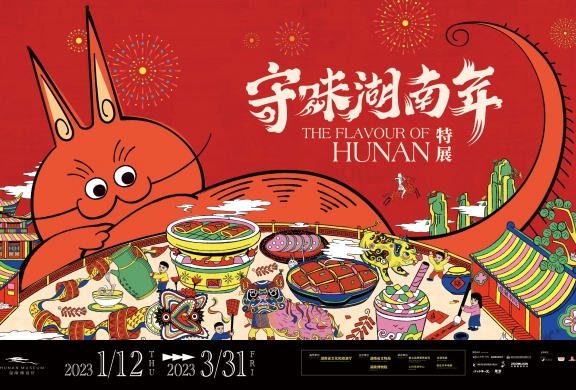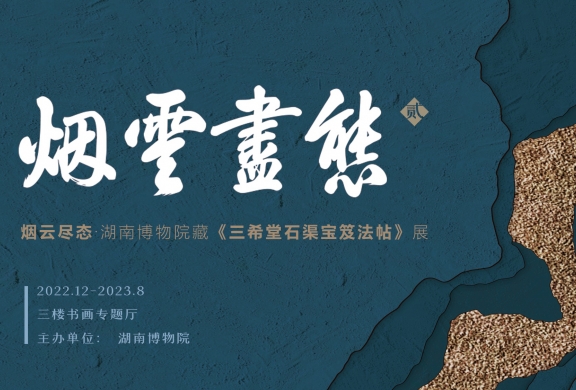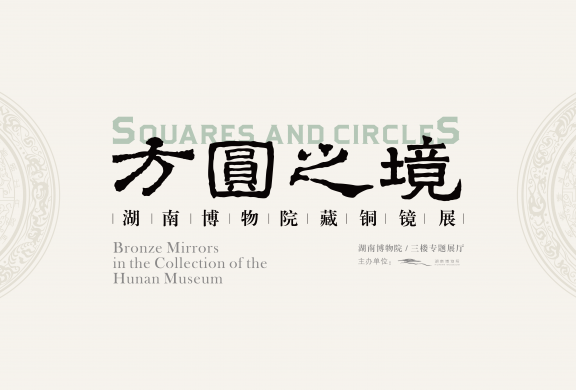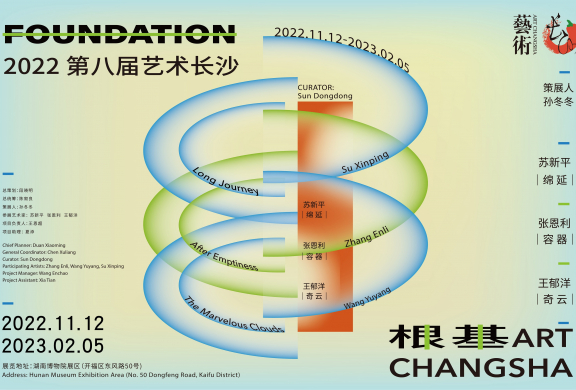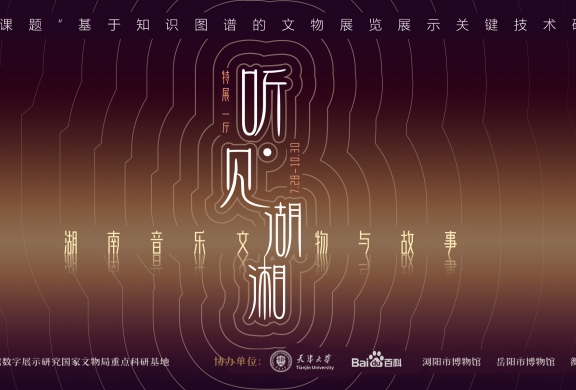Past Exhibitions
Cultural Relics of Four Dynasties: Zhou, Qin, Han and TangNo.1 Special Exhibition Hall, 1F 2023.02.24 - 2023.06.11 Shaanxi, one of the significant birthplaces of the Chinese nation and one of the centers of the ancient world civilization, served as the capital for fourteen dynaties, including Zhou, Qing, Han and Tang. Shaanxi’s profound cultural heritage and historical accumulation have endowed it with an extraordinary rich cultural legacy, fostering highly developed material and spiritual civilizations, and composing the most glamorous chapter of Chinese civilization. This exhibition gathers 120 sets of ancient cultural relics from various institutions such as Shaanxi History Museum, Xianyang Museum, Han Yangling Museum, Famen Temple Museum, Qianling Museum, and Chang'an Museum. Guided by the timeline and centered on the cultures of Zhou, Qin, Han, and Tang, the exhibition unfolds brilliant chapters of Shaanxi's history, showcasing the essence of thought and cultural elegance carried by these four dynasties during the process of civilization development. The exhibition highlights the national spirit and cultural confidence of the Chinese nation, characterized by virtues, diligence, inclusiveness, and innovation, vividly presenting the glorious epochs in Chinese history. History may be distant, but it is not illusory, and relics may be silent, but they can tell stories. Hunan Museum sincerely invites the audience to traverse through thousands of years of time, experience the splendid memories of ancient China, and immerse themselves in the rituals of Zhou, the governance of Qin, the culture of Han, and the charm of Tang, share the dreams and glory of the past. |
The Flavor of HunanArt Hall, 1F 2023.01.11 - 2023.03.18 The Spring Festival is the most solemn traditional festival of the Chinese nation. Taking the Spring Festival as an opportunity, the special exhibition "the Flavor of Hunan" invites the audiences to gather at the Hunan Museum to experience the customs, sceneries and local specialties of Hunan and share the taste of the Spring Festival. The Hunan Museum,with its abundant collection of cultural relics resources, brings cultural relics alive and connects history with the present through the scene experience of juxtaposition of ancient and modern times and comparison of time and space. The design of the lacquer plate, a leopard cat, excavated from Mawangdui in the Western Han Dynasty is the image ambassador of this exhibition. It travels from ancient to modern times, travels all over Hunan province, and explores the unique taste of Hunan’s new year. From the family banquet of sitting on the ground and eating separately in Western Han Dynasty to the round table dinner of the New Year’s Eve these days, the exhibition focuses on telling the Hunan’s and China’s stories behind the cultural relics and local sceneries. |
Exhibition of the Sanxitang Shiqubaoji Model Calligraphy ⅡThemed Exhibition Hall, 3F 2022.12.30 - 2023.10.08 |
Squares and Circles—Exhibition of Bronze MirrorsThemed Exhibition Hall, 3F 2022.12.08 - 2023.11.30 |
Foundation: the Art Changsha 2022No.1 and No.2 Special Exhibition Hall, 1st Floor 2022.11.03 - 2023.02.05 In the Chinese modern art history, there was a correction of appellation concerning the art medium: after the founding of the People’s Republic of China, the generally accepted appellation of "foreign painting" or "western painting" in the first half of 20th century was swiftly substituted by the name of "oil painting" which was named after its material feature. However, there was difference of only a single word, the appellation of oil painting interpreted the promotion, dissemination and practice of it, as well as corresponding transformation and construction of modern art in China, as the practicing process of learning advanced culture to nurturing new culture. From the perspective of "culture-politics", the appellation of oil painting suggested that China's modernization was an internalization process oriented to the "world picture". How to interpret the internalization process of China’s modernization, or rather, how to establish the historical consistency between China’s contemporary art and China’s modern art, is the focus and thinking topic of this exhibition. In fact, when facing the current Chinese society, there were numerous people in China’s contemporary ideological sphere advocated that the public should grasp and deal with the historical correlation among three traditions of Confucian culture, socialist revolution and the reform and opening up. Moreover, scholars coincidentally mentioned that it was necessary to confront the significance of the entire traditional Chinese historical culture to the historical foundation and spiritual foundation of modern China—as an inspiration for ideological plans, the transcendence of spacetime displayed by Chinese civilization has undoubtedly set up a larger historical and cultural framework for the topics covered in this exhibition, which is a reflection of Chinese contemporary art. "Foundation" of this exhibition consists of three solo art exhibitions of Chinese artists: Zhang Enli’s "After Emptiness",Wang Yuyang's "The Marvelous Clouds" and Su Xinping’s "Long Journey". As for the concept and practice of art, although three artists own different orientations, from their artworks, the public could capture a modern experience of Chinese art represented by oil painting throughout the ancient and modern times: one is universal living world that keeps pace with the times, and the other is the value world of thinking and presenting "who we are", the two worlds are dialectically unified in the narrative and practice of self-history. Therefore, in a sense, the "civilization" here does not mean a context of the past, on the contrary, it is a scene of historical possibility about how we move towards the future. |
Hearing and Seeing Huxiang - the Exhibition of Hunan Musical RelicsNo.1 Special Exhibition Hall 2022.07.28 - 2022.10.30
Foreword Music is the forerunner of civilization, nourishes the childhood of human beings, and carries the future of the nation. Hunan is located in the middle reaches of the Yangtze River, south of Dongting, and is one of the important cradles of Chinese civilization. The landscapes in Hunan are gorgeous, everything is vigorous, and rivers flows for ages, nurturing unique and rich musical culture. More than 6,000 years ago, the sounds of ancient musical instruments(stone whistles, pottery balls and pottery drums) flied on the Liyang Plain, accompanied by the joy of work; on the banks of the Weishui River, resounding with the sound of Nao of the Shang and Zhou Dynasties; on the banks of the Miluo River, the sorrow of Quyuan echoed; various types of musical performances acted in the Han and Jin Dynasties; exotic music prospered in the Sui, Tang, Song and Yuan Dynasties; ancient music of Liuyang opened a new chapter in ritual music culture. Music is the common language of all mankind, thousands of years have passed, can these silent notes in history be awakened again today? Listen,the sound of Huxiang—the most beautiful language, either whispered or chirped, soothing or abrupt, soft or strong, deep or distant, tells the longing and call of the ancestors of Huxiang for a better life. Let us start a wonderful audio-visual journey in this eternal and beautiful music world! Chapter One In the late Shang and the early Zhou Dynasties, local artisans in Hunan, a region influenced by the Shang culture of the Central Plains, created a large bronze musical instrument-Nao. The further development of bronze instruments such as Nao, Zhong, and Bo, and the determination of two-tone effect, laid the foundation for the ritual music culture of the Zhou Dynasty. Chapter Two From the mid-Spring and Autumn Period to the Warring States Period, Hunan was incorporated into the territory of Chu(State), and its music culture showed the solemn and profound, romantic and sentimental beauty of Chu tunes, including the ritual music needed to maintain the ritual system, as well as the folk music to release the mind, and the verses of Chu, which not only pleased people, but also entertained the gods. The diversity of musical instruments has also foster the "Eight-Tone Harmony" musical performance form, which constituted the grandeur of Chu’s music and dance. Chapter Three Since the Qin and Han Dynasties, Hunan has become an important part of China's unified multi-ethnic country, and many material relics of musical culture have been left throughout the ages. During the period of the Han, Wei and Jin Dynasties, the traditional Chinese music form changed from the ritual music to the dance music, and a large number of excavated objects and portrait bricks and stone reliefs of Han Dynasty showed various types of musical performances that combined instrumental music, singing and dancing, acrobatic and other art forms at that time, reflecting time features of people’s pursuit of high-quality and joyful life. Chapter Four The Tang Dynasty saw unprecedented prosperity in culture and art, with unprecedented development in dance music, especially court ·music, and the exotic style was also spread to the land of Hunan. From the late Tang Dynasty to the Song Dynasty, the music of the literati became unique, and the entertainment culture of the citizens also flourished, especially during the Yuan and Song Dynasties, the dramas were popular throughout the country. The musical relics unearthed in Hunan reflected the flourishing musical art achievements of this period under the heyday of national unification. Chapter Five Since the Ming and Qing Dynasties, Huxiang music has entered a new stage of historical development, people of civil and military ability could express their political aspirations through music, conveying their sentiments of governing the world and saving the country, as well as their desire to survive and innovate. In addition, there is music of the ethnic groups, which is cheerful and joyful, commemorates the spirits of the ancestors, and encourages production.The "Ding Festival" at the Wenmiao Temple in Liuyang is a direct testimony to the traditional culture of respecting Confucianism, and highlights the magnificent music of Hunan. Last Chapter Gathering together, on the shore of Hunan, the ancient music is still in the ears, and the familiar melody comes out naturally. Ancient poetry and paintings are displayed, the music is melodious and acclaimed...
|


